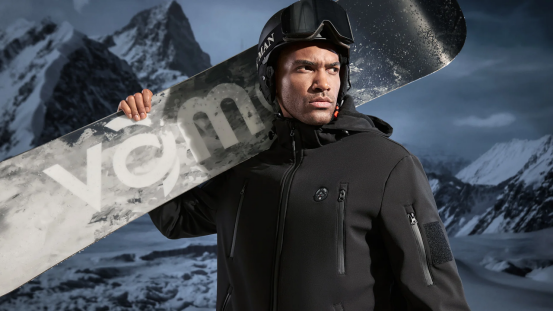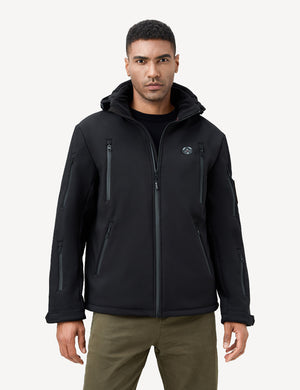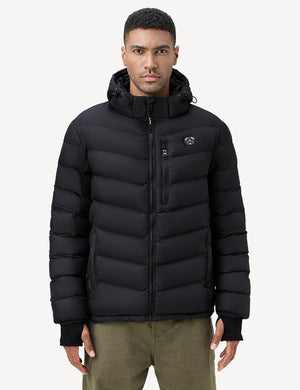In recent years, the advent of heated jackets has revolutionized the way we approach cold weather. Gone are the days when bulky layers were the only solution to combat freezing temperatures. Today, technology has paved the way for a more elegant and efficient solution: jackets that generate their own heat. As these innovative garments grow in popularity, an intriguing question arises: How do heated jackets work? In this blog, we’ll delve into this topic and demystify the working principle of heated jackets.
How Do Heated Jackets Work?
Heated jackets are a marvel of modern clothing technology, blending the comfort of traditional winter wear with advanced heating systems. In this section, we will explore the integral components that make these jackets so effective at keeping you warm. We'll start by examining the types of heating elements used and their functionality. Then, we'll discuss the power sources that bring these elements to life, delve into how users can control the temperature for their comfort, and finally, consider how all these technologies are integrated into the jacket's design without sacrificing style or functionality. Each aspect, important to explain the question “how do heated jackets work”, plays a crucial role in providing a seamless and comfortable experience for the wearer.
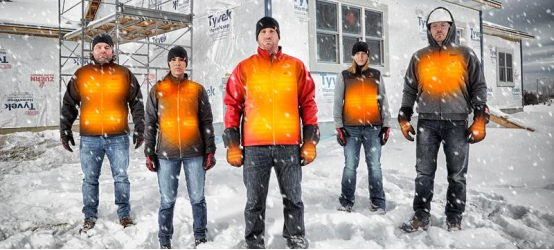

Heating Elements: Types and Functionality
Heated jackets primarily utilize two types of heating elements: carbon fiber and wire-based systems. Carbon fiber elements are favored for their lightweight and flexibility, allowing them to conform to the body comfortably while distributing heat evenly. These elements are typically integrated into key areas of the jacket such as the back, chest, and sometimes pockets. Wire-based systems, alternatively, are known for their durability and robust heat distribution. Both types work by converting electrical energy from the jacket's battery into heat, providing a controlled and efficient warming experience. The choice between carbon fiber and wire-based elements often comes down to the balance between comfort, weight, and the intensity of heat required.
Power Source: Batteries and Charging
The efficacy of heated jackets largely depends on their power source, typically rechargeable batteries. These batteries are usually lithium-ion, known for their long life and ability to provide consistent power output. They are compact and lightweight, making them ideal for integration into clothing without adding significant bulk. The heating elements in the jacket draw power from these batteries to generate heat. Charging these batteries is straightforward, often involving a USB connection that allows for convenient charging via standard outlets or portable power banks. The longevity of the battery charge varies based on the jacket's heat settings and usage, making the battery's capacity a crucial factor for users who spend extended periods in the cold.
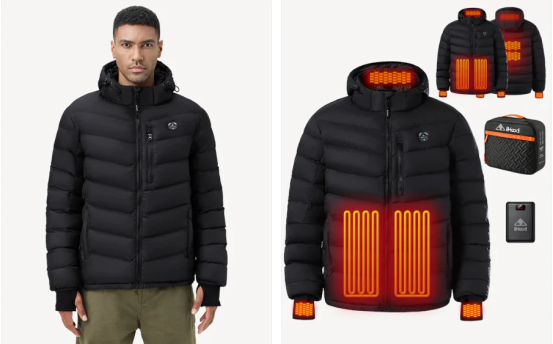

Temperature Control: User Interface and Settings
Heated jackets offer user-friendly interfaces for temperature control, allowing wearers to adjust the heat to their comfort level. These interfaces typically include buttons or touch panels located on the jacket, enabling users to easily switch between different heat settings. Take iHood’s Soft Shell Heated Jacket for women as an example. Wearers can adjust the temperature and select the heating zone using the buttons incorporated into the iHood logo, offering a design that is both sleek and convenient. The temperature settings usually range from low to high, providing flexibility for various outdoor conditions and personal preferences. This level of control not only enhances comfort but also helps in managing battery life more efficiently.
Integration and Design: Making Technology Wearable
The success of heated jackets lies in how well the heating elements and batteries are integrated into the design, ensuring wearability and comfort. Designers meticulously embed these components in a way that balances functionality with aesthetics. The heating elements are often strategically placed and sewn into the fabric to provide even heat distribution without being obtrusive. Batteries are compactly designed and placed in inconspicuous pockets for ease of access and minimal impact on the jacket's style. This careful integration ensures that the jackets remain lightweight, flexible, and stylish, akin to traditional winter wear, while still providing the added benefit of heat.
To sum up, heated jackets mark a substantial leap forward in cold-weather clothing. With their effective, varied heating elements and compact, yet robust batteries, they provide a cozy, adjustable solution to keeping warm. The ease of temperature control enhances user convenience, enabling adjustments to suit both the surroundings and personal choice. These elements are flawlessly incorporated into the jacket's design, illustrating the impressive fusion of technology and fashion. As wearable technology evolves, heated jackets serve as a prime example of the advancements in contemporary clothing.
Use Cases for Heated Jackets
Having answered the question “how do heated jackets work”, we are now moving to another question — where do I need to wear a heated jacket?Heated jackets are incredibly versatile, catering to a wide range of activities and needs.
- Outdoor Sports Enthusiasts: Ideal for skiers, hikers, providing consistent warmth in cold temperatures, eliminating the need for multiple layers.
- Daily Commuters: Offers comfort during cold morning or evening commutes, providing adjustable warmth in variable weather conditions.
- Cold Environment Workers: Beneficial for construction workers, warehouse staff, maintaining comfortable body temperature throughout the workday in chilly settings.
- Winter Camping and Trekking: Keeps campers and trekkers warm in low temperatures, especially during nighttime or in high-altitude areas.
- Motorcyclists and Cyclists: Protects riders from the chill of high speeds and open-air environments, enhancing comfort on long journeys.
- Spectators at Outdoor Events: Provides warmth for those attending outdoor sports games or concerts during colder months, ensuring a more enjoyable experience.
- Photographers and Wildlife Observers: Useful for individuals who spend extended periods outdoors, requiring steady warmth while remaining stationary for photography or observation.
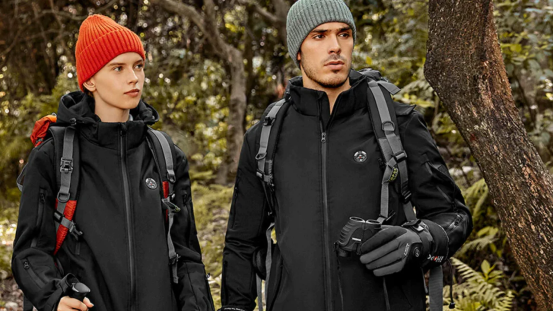

Benefits Compared to Conventional Winter Clothing
Heated jackets stand out for their capacity to deliver focused, modifiable warmth. In contrast to standard winter coats that depend exclusively on insulation, these jackets employ active heating to sustain a cozy temperature, especially advantageous in changing weather conditions. Moreover, their design is typically less cumbersome, enhancing movement and comfort. The blend of active heating with a sleeker profile renders heated jackets an effective and adaptable choice for staying warm in chilly climates.
Introducing iHood’s Heated Jackets
iHood presents a selection of heated jackets crafted to deliver comfort and warmth in chilly conditions. Equipped with cutting-edge heating technology, these jackets boast effective heating components and rechargeable batteries, guaranteeing warmth across diverse outdoor environments. Additionally, iHood integrates intuitive temperature control features, balancing aesthetic appeal with practicality. Let's explore these aspects in more detail.
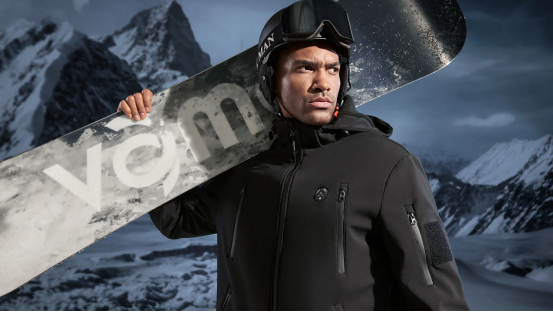

Types of iHood’s Heated Jackets
iHood presents a diverse range of heated jackets, catering to both men and women with two distinct styles: the Soft Shell Heated Jacket and the Heated Puffer Jacket. The Soft Shell Heated Jacket is designed for versatility and ease of movement, ideal for those who are active or require a jacket that adapts to different settings. On the other hand, the Heated Puffer Jacket offers enhanced insulation, perfect for extreme cold conditions where extra warmth is paramount. Each style comes equipped with advanced heating technology, ensuring comfort in a variety of outdoor situations. These jackets not only address different climatic needs but also cater to individual style preferences, showcasing a blend of functionality and fashion.
Soft Shell Heated Jackets
- Features
- Constructed using advanced, lightweight, and water-resistant materials, these jackets offer durability without sacrificing comfort.
- The sleek design makes them fashionable, blending seamlessly with everyday wear.
- Innovative heating elements are strategically positioned for maximum warmth distribution.
- Functions:
- These jackets are not just for battling cold weather; they are engineered for a variety of outdoor activities like hiking, biking, or even for casual urban explorations.
- The design integrates heating technology in a way that doesn't hinder movement, ensuring that you stay warm without feeling bulky.
- Additional Advantages:
- The combination of style, lightweight design, and heating efficiency makes these jackets highly versatile.
- They are suitable for transitioning between different environments, from a chilly outdoor setting to a cooler indoor area.
- The materials used are meant to stand up to various weather conditions, ensuring longevity and performance.
Heated Puffer Jackets
- Features:
- Outfitted with advanced insulation layers, the jackets deliver outstanding warmth.
- Their bulkier design ensures extensive coverage, crucial for harsh, freezing conditions.
- Comfort and ease of wear are key, despite the larger size.
- Functions:
- Tailor-made for severe, frigid environments, these jackets are adept at heat retention and maintaining comfortable internal temperatures.
- The insulation synergizes with the heating elements, ensuring consistent warmth, even in below-freezing conditions.
- Additional Advantages:
- The prominent insulation level is a major advantage, ideal for those regularly facing extremely cold temperatures.
- The build quality of the jackets not only provides essential warmth but also endures the challenges of harsh winter climates.
- Striking a balance between technological innovation and comfort, these jackets are a dependable option for extreme weather scenarios.
iHood's Soft Shell Heated Jackets and Heated Puffer Jackets offer a harmonious mix of technology, comfort, and fashion, each designed for particular climatic needs and lifestyle preferences. Whether it's a jacket for daily wear or for harsher weather conditions, iHood provides an array of attractive choices.
Conclusion
Heated jackets represent a groundbreaking fusion of fashion and technology, offering a practical solution for cold weather. But how do heated jackets work? With lightweight, flexible heating elements, efficient rechargeable batteries, and user-friendly temperature controls, they provide customizable warmth while maintaining style and comfort. Ideal for outdoor enthusiasts, commuters, and professionals working in cold environments, heated jackets are a versatile, less bulky alternative to traditional winter wear. iHood's range, including Soft Shell and Heated Puffer Jackets, demonstrates the innovation and adaptability of these garments, catering to diverse needs and conditions.


